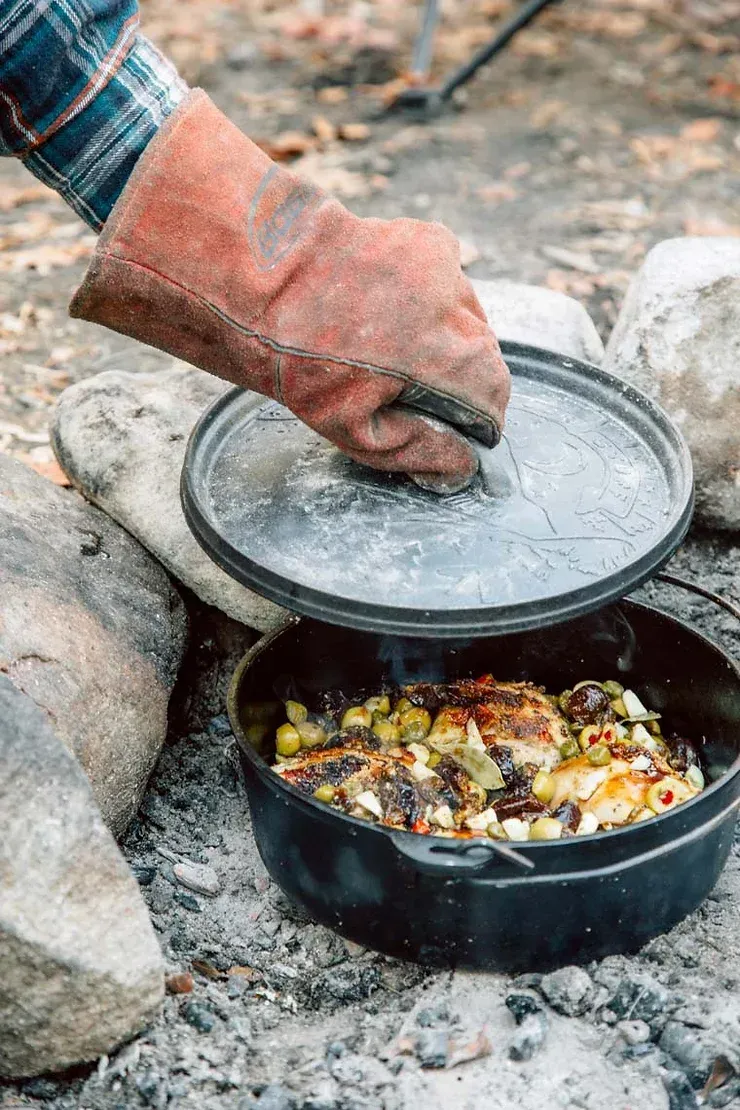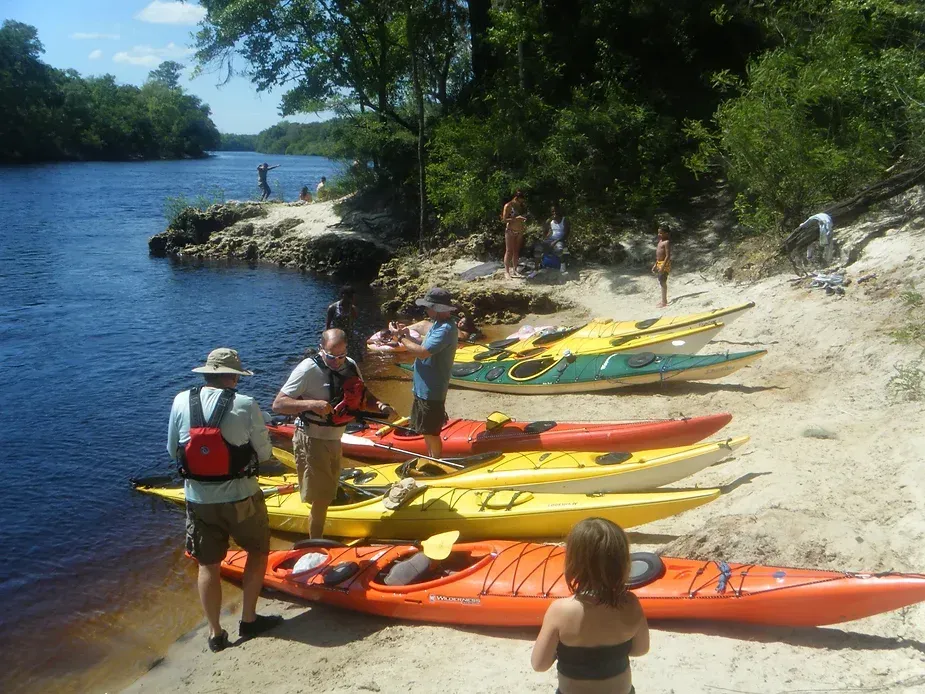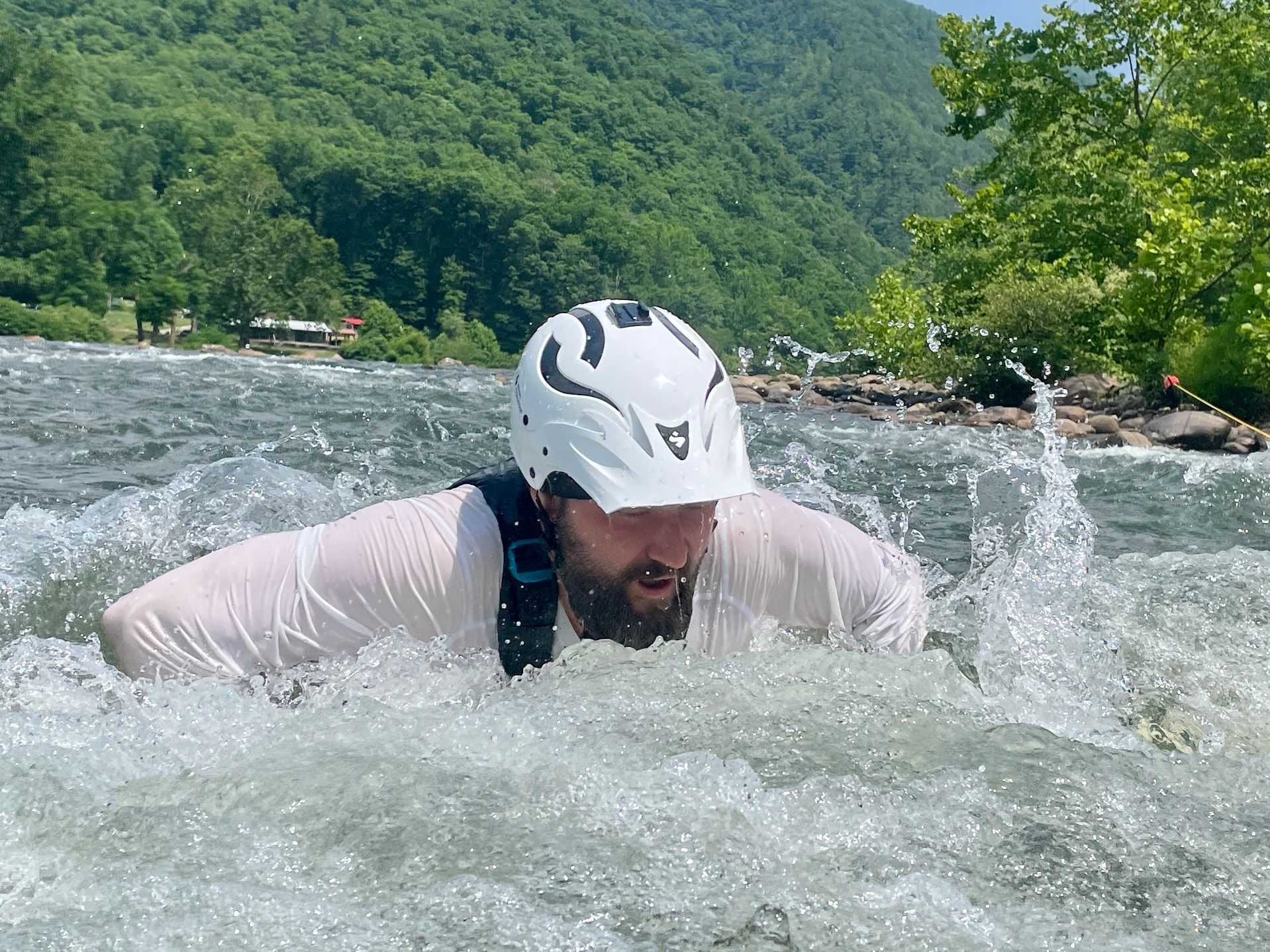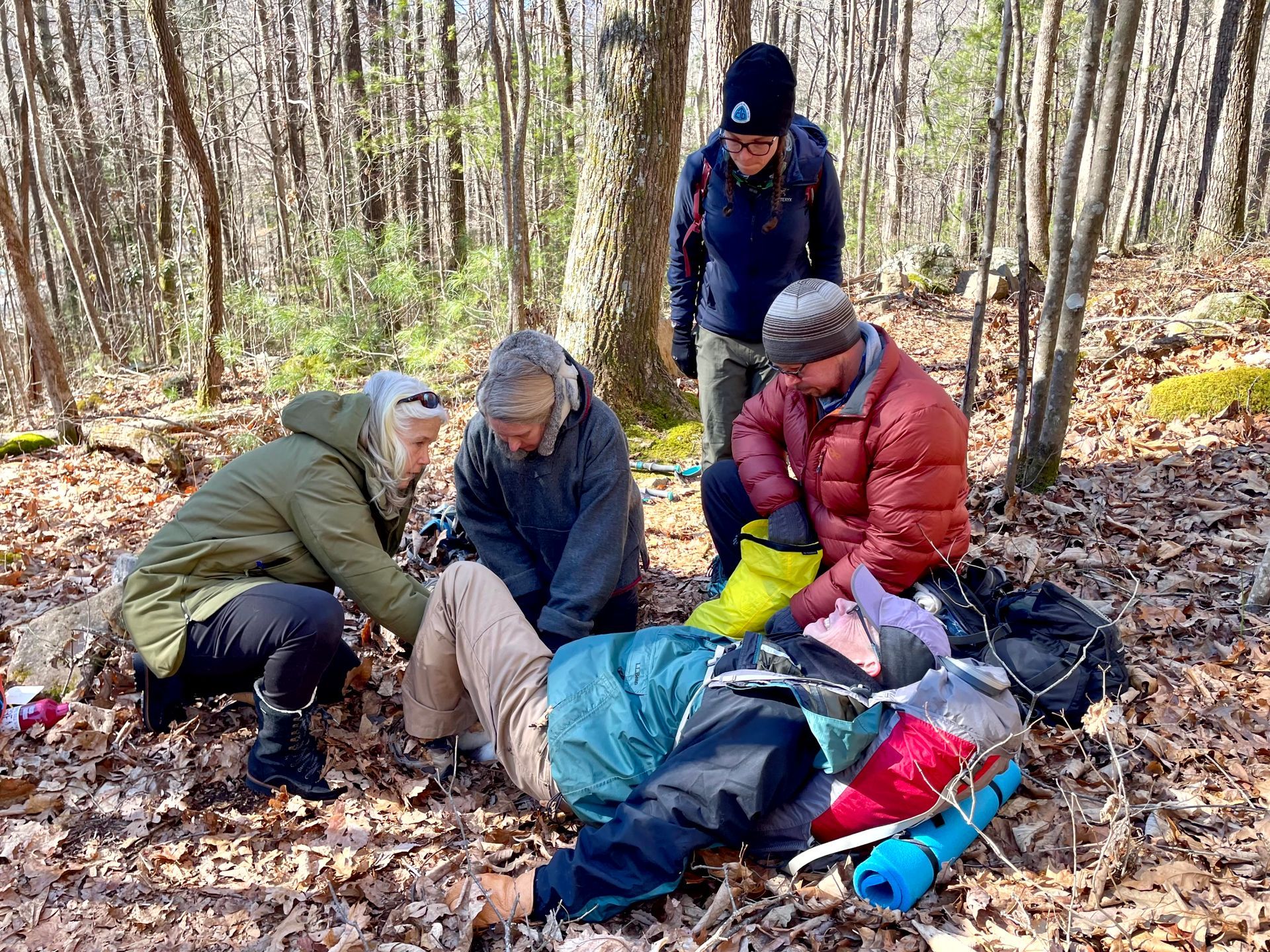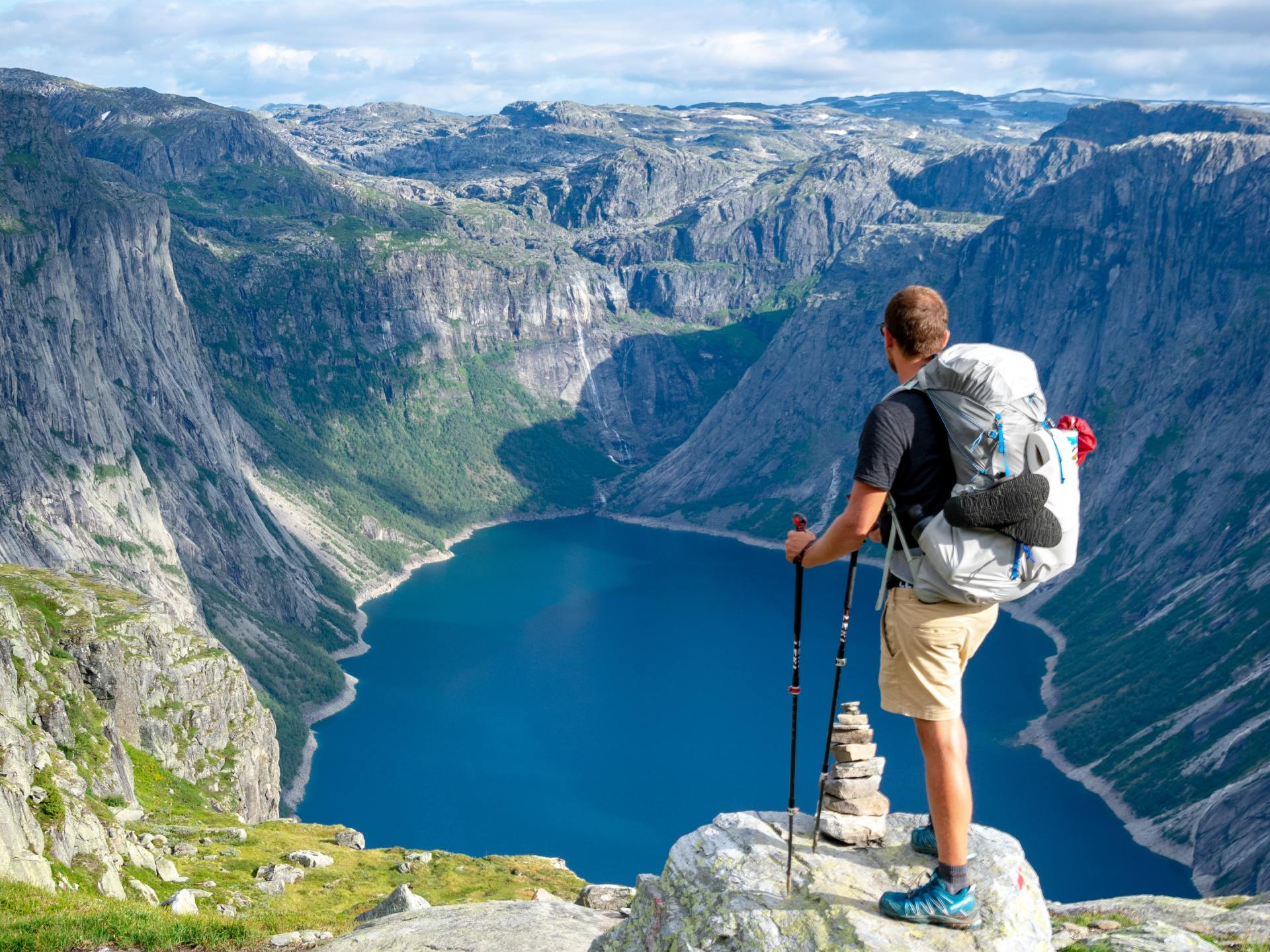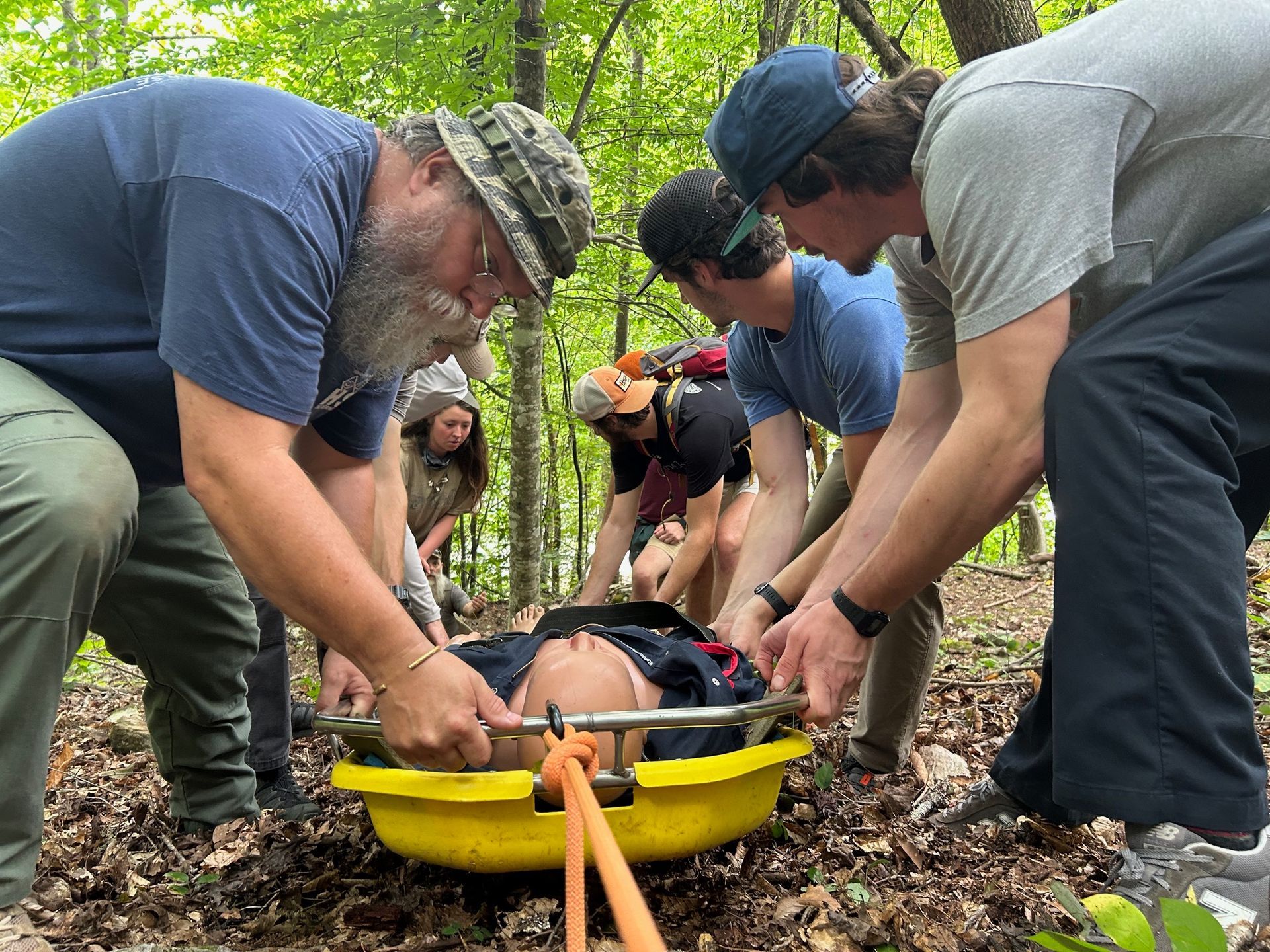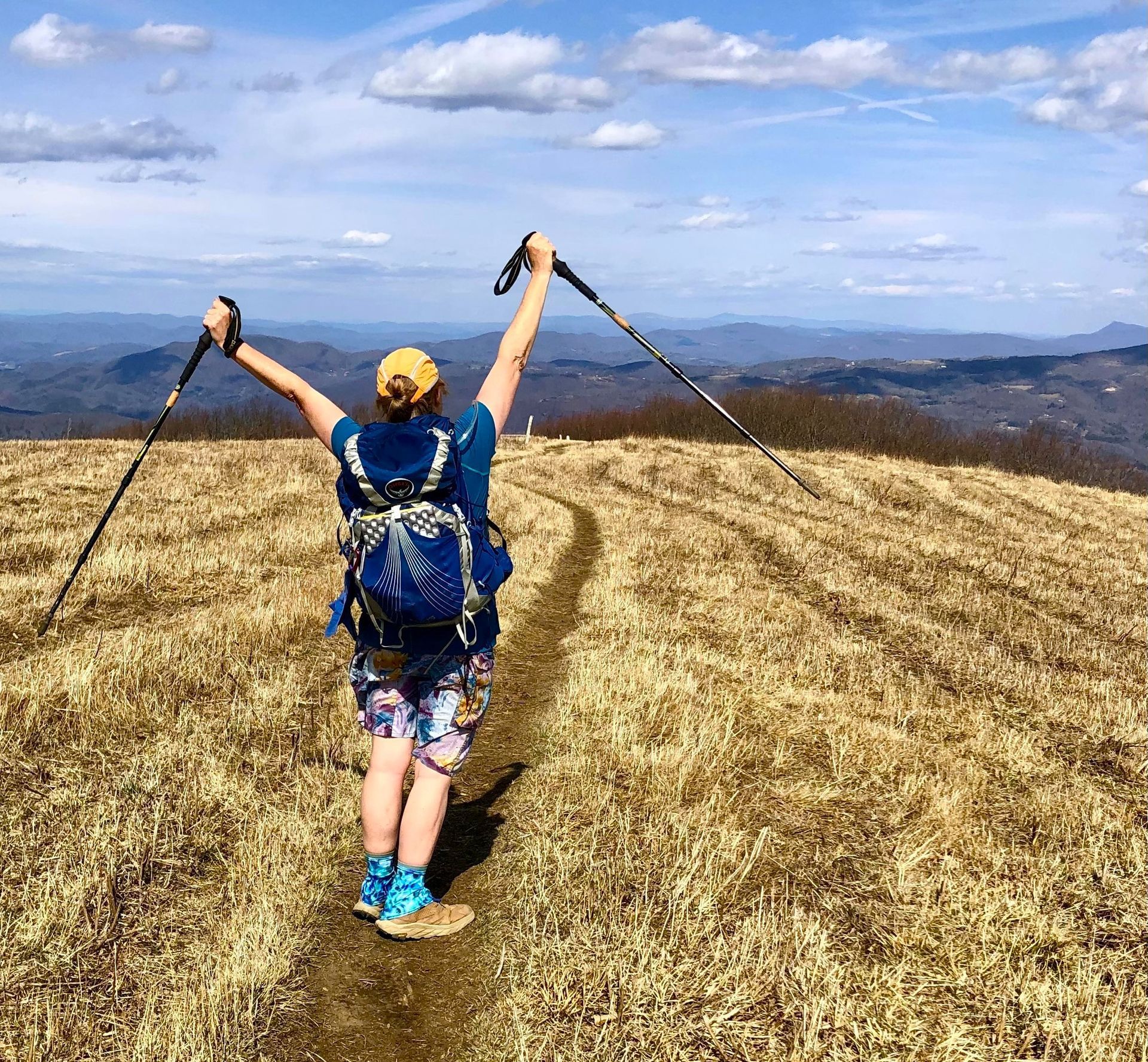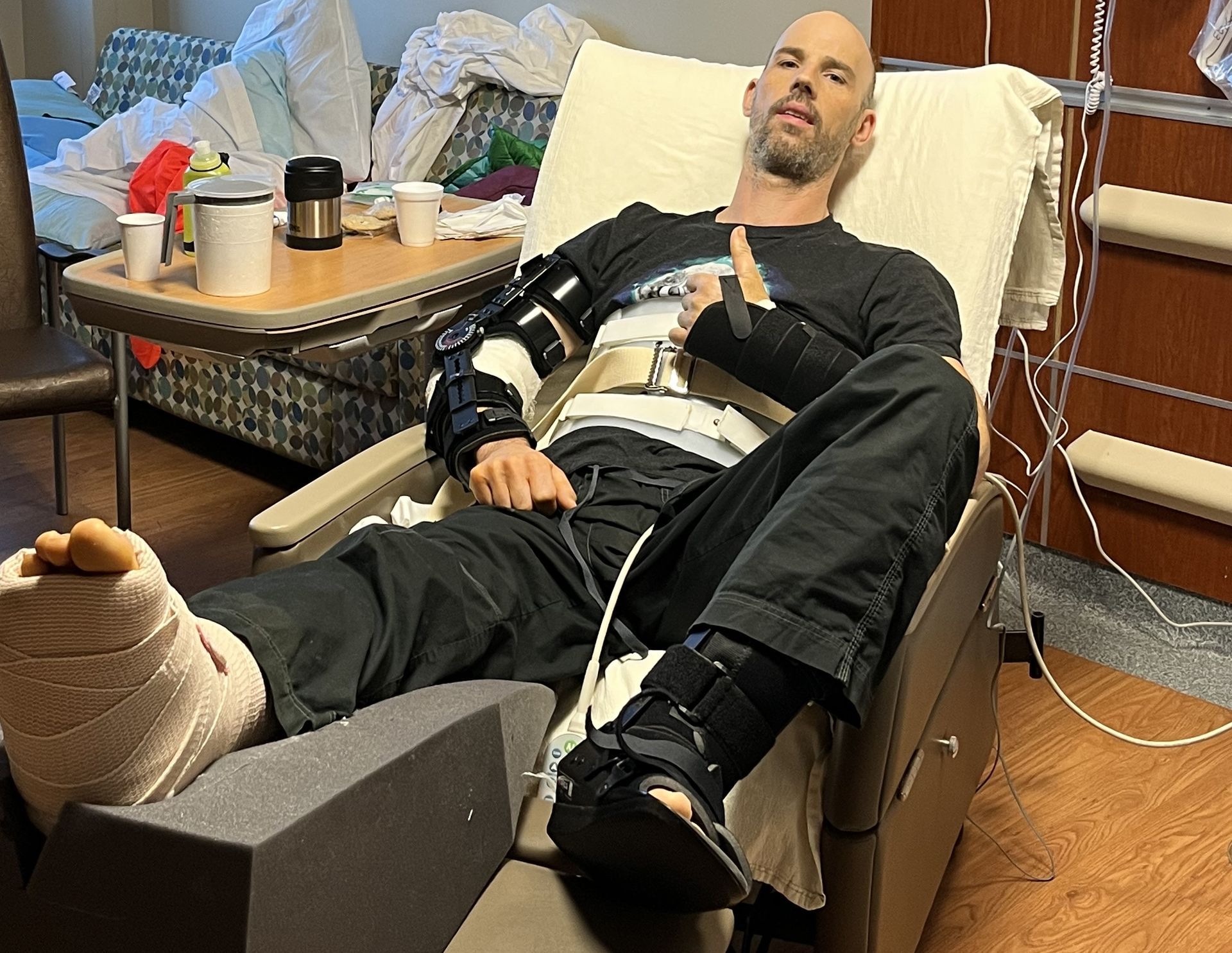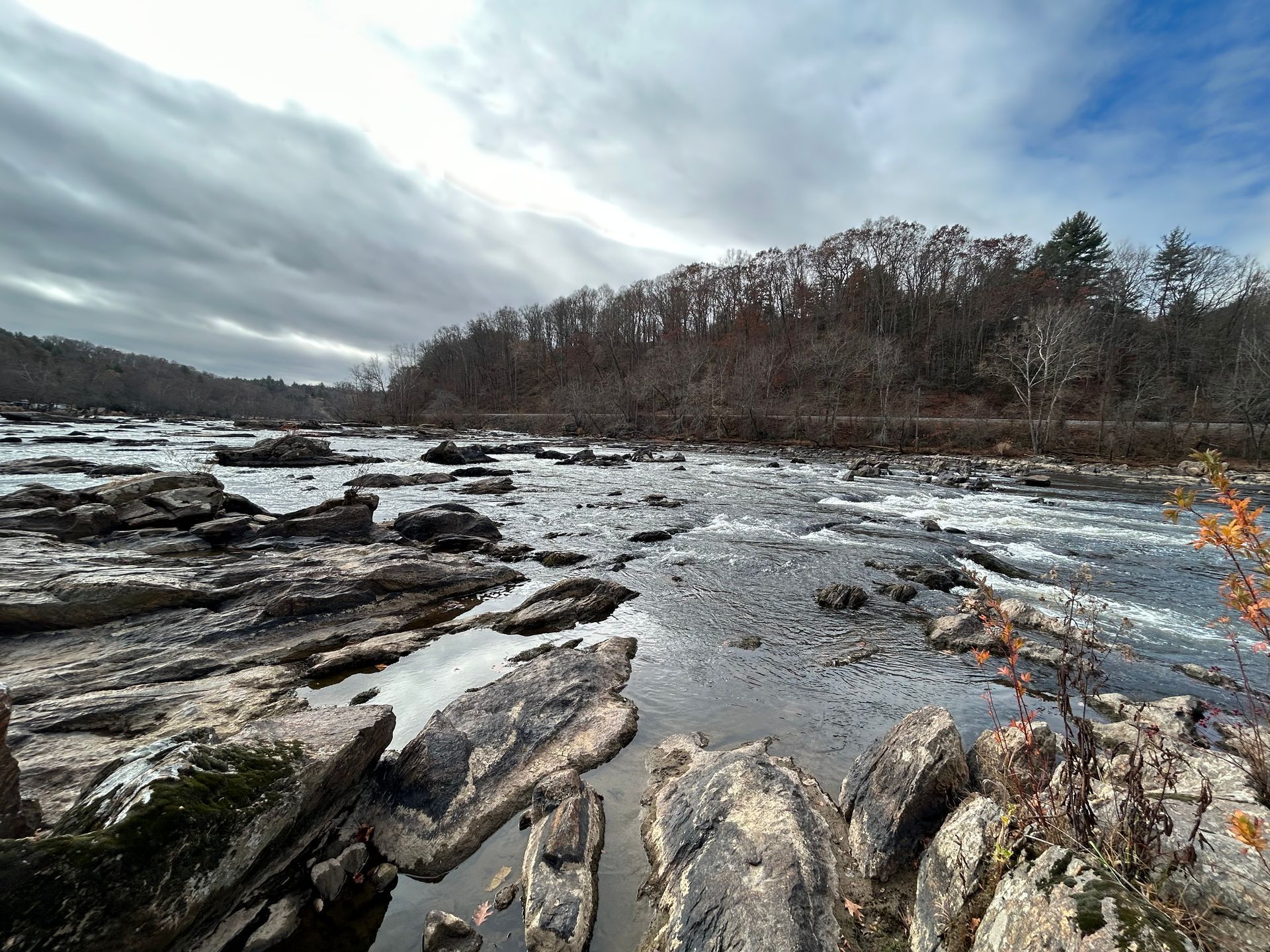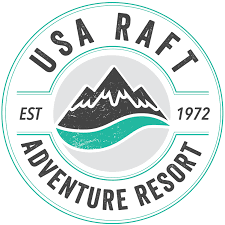Trotlines are Dangerous
Why is Scott Fisher Facing Criminal Charges for
Removing a Potentially Lethal Hazard on the Nolichucky River?
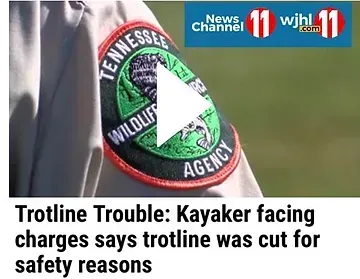
Over Memorial Day weekend, our own Scott Fisher was teaching a Whitewater Kayaking instructor course on the Lower Nolichucky River in Erwin, TN. In this case he was accompanied by Robin Pope, the ACA President of the Board of Directors and Division Chief for the Paddlecraft Safety Division for the US Coast Guard Auxiliary nationwide. Also accompanying them was Tom
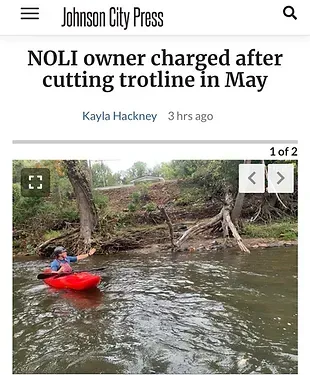
Burroughs, a highly esteemed Whitewater Kayaking Instructor Trainer and Advanced Swiftwater Rescue Instructor Trainer Educator from Arkansas. (In our own ACA world, Tom and Robin are 2 of the 5 highest ranking Whitewater Safety & Rescue Instructors in the nation.)
During the course of the class, one of the instructor candidates became tangled in a fishline and briefly snagged a fishhook on his PFD. Upon examination, the instructor class realized that a trotline with multiple had been placed bank to bank across the whitewater river. The ensnared paddler was a highly
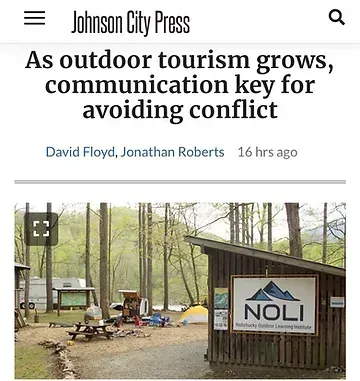
experienced kayaker and he had the wherewithal to disentangle himself rapidly and without injury. But this section of river is a heavily traveled tourism destination, often utilized by kids and families on all manner of paddlecraft and inner tubes. The trotline was suspended at a height that would strike a canoe, kayak or raft paddler, or an inner tube rider, anywhere from just above water level to neck and head level, and an SUP paddler at ankle to thigh level.
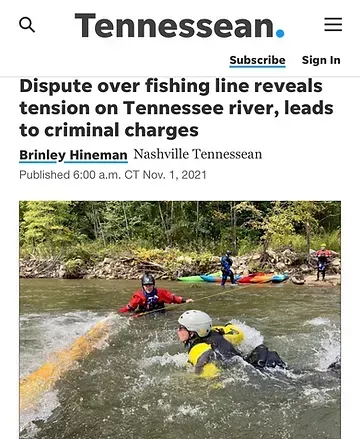
The instructor team recognized that a hazard had been placed on the river during a heavily trafficked holiday weekend and removed the hazard. There were no markings
on the trotline that were visible to anyone at water level to identify an owner and no owner was anywhere in sight. It was not a hypothetical hazard; it was a demonstrated hazard having already ensnared a paddler.
Downstream, fishermen confronted the class, videoed the exchange and posted inflammatory narratives and threats against paddlers on social media. At the takeout, the fishermen blocked the paddlers' cars and would not leave until law enforcement was called.
Fundamentally, this situation could have been handled as a user conflict between different user groups sharing the river, or safety could have been prioritized and actions taken against the person who created
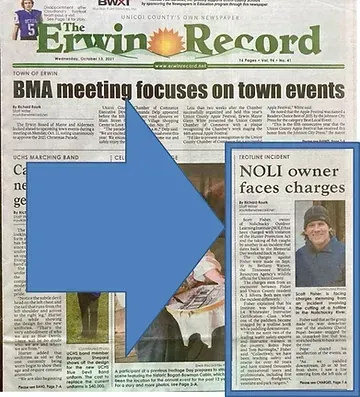
a hazard on a navigable river (and the county's most popular tourist attraction). Instead, TWRA and the local District Attorney decided to press criminal charges against Scott Fisher.
Scott served our country as an Officer in the 101st Airborne, a Ranger qualified soldier who was decorated for his service to our country. And now he serves us as one of the top 15 Whitewater Safety and Rescue instructors in the American Canoe Association nationwide. On Memorial Day weekend he helped keep our community and the people who vacation here safe on the river. He does not deserve to be fingerprinted and processed like a criminal or face criminal charges for keeping people safe after the trotline was demonstrated as a proven hazard.
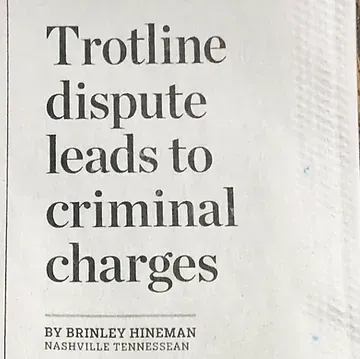
Please click this link (below) to send an email to the TWRA Fish and Wildlife Commissioners and ask that the trotline regulation be changed so that it does not allow a trotline to be set bank to bank across moving water.

